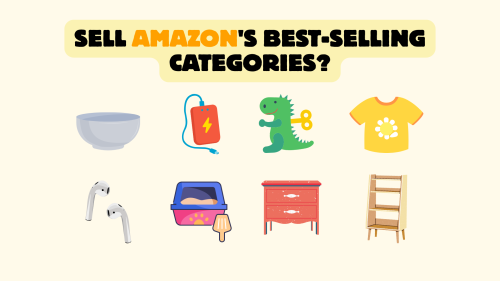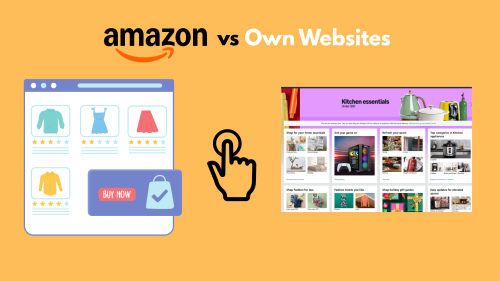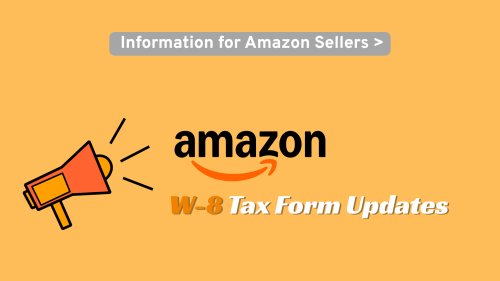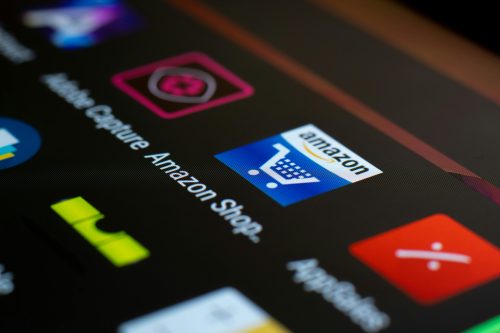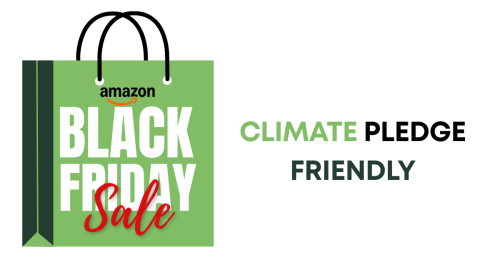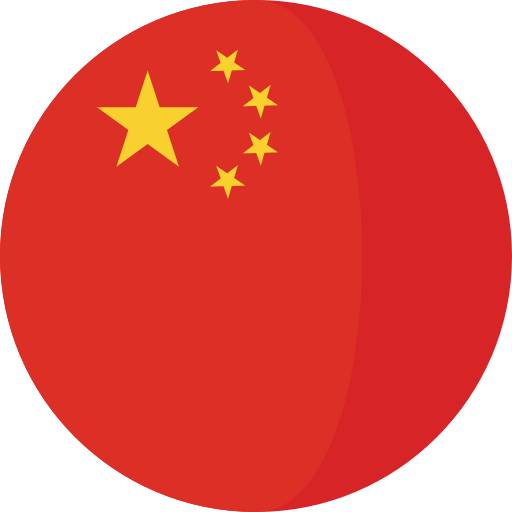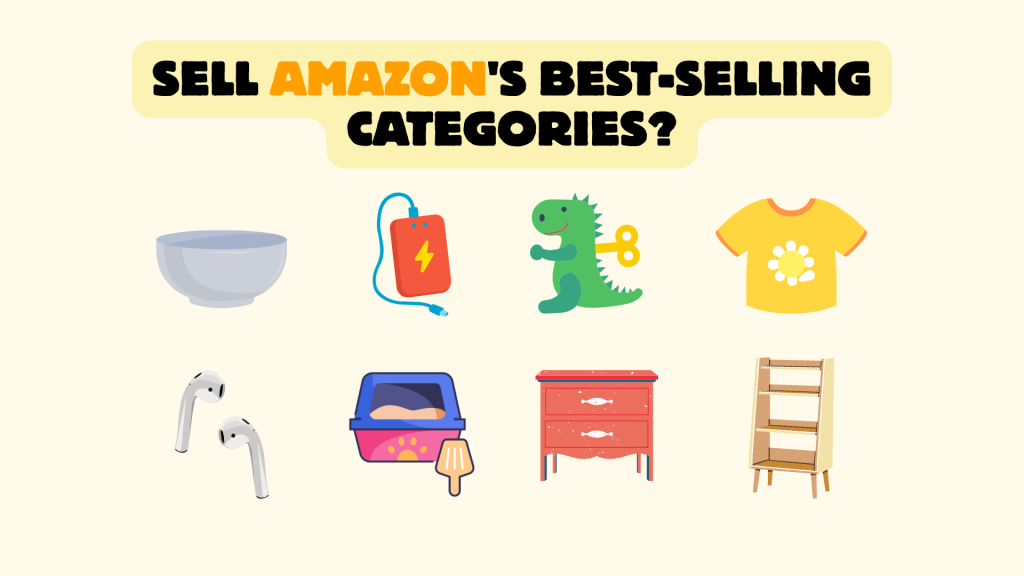
It’s the first question every new Amazon seller asks. You look at the "Best-Sellers" list—seeing the massive sales volume in Electronics, Home & Kitchen, and Apparel—and think, "That's where I need to be."
It’s tempting. The data proves millions of customers are actively buying in these categories. Why try to create demand when you can just jump into a flowing river of it?
But here’s the hard truth: for 95% of new sellers, targeting Amazon's best-selling categories is a fast-track to failure.
The high demand you see is only half the story. The other half is crushing competition, sky-high ad costs, and non-existent profit margins.
Our Viewpoint: Unless you are an established, household-name brand or have a massive marketing budget, you should not try to compete in the broadest best-selling categories. The smarter, more profitable strategy is to identify a small, underserved sub-niche within these popular categories.
The Data-Backed Dangers of Top Categories
Top-level categories like "Home & Kitchen" are what we call "red oceans"—bloody with competition. When you decide to sell a generic product here, you are entering a market with 1.9 million other active sellers, all fighting for the same customers.
The Competition is Statistically Crushing
The "best-selling" categories are also the "most-sold-in" categories. According to a 2024 analysis by Jungle Scout, the most popular categories for sellers are:
- Home & Kitchen: 35% of all sellers
- Beauty & Personal Care: 26% of all sellers
- Clothing, Shoes & Jewelry: 20% of all sellers
- Toys & Games: 18% of all sellers
When you launch a product here, you aren't just competing with other new sellers. You are in a direct fight with industry giants, established FBA veterans with thousands of reviews, and Amazon itself.
You Are Competing with Amazon's Data
The first competitor you'll face is Amazon. Through its AmazonBasics brand, Amazon identifies the best-selling, highest-margin products—using its own third-party seller data—and then creates its own version.
Once launched, Amazon's products get preferential treatment, including prominent search placement and "Amazon's Choice" or "Best-Seller" badges, making it nearly impossible for a third-party seller to compete on the same listing.
Sky-High Advertising Costs (PPC)
Because competition is so high, the cost to advertise is astronomical. To get your product seen, you must run Amazon Sponsored Products (PPC) campaigns.
According to e-commerce advertising data, the average Cost-Per-Click (CPC) on Amazon is around $1.00. However, in "High-CPC" niches like Electronics or Health & Personal Care, that cost can skyrocket to $2.00, $3.50, or even more for a single click on a top keyword.
A new seller can burn through a $5,000 ad budget in days and have almost no sales to show for it, because their un-reviewed product simply won't convert against listings with 10,000+ reviews.
The Race to the Bottom (Vanishing Profit)
In a crowded market, the only way to compete is on price. This creates a "race to the bottom" where sellers constantly undercut each other, shaving their profit margins down to pennies.
This is backed by seller data. In the Home & Kitchen category—the most popular on Amazon—a staggering 14% of sellers are unprofitable or don't even know their profit margin. After Amazon's FBA fees (typically 15%), storage fees, and ad costs, you can easily end up losing money on every "best-selling" item you ship.
A Smarter, Data-Backed Strategy for Profitability
Instead of fighting in a red ocean, you should find a "blue ocean"—a clear, uncontested market niche. This niche is almost always a sub-category of a best-seller.
The goal is not to sell a product everyone wants, but to sell a specific product that a specific group of people loves.
This "niching down" strategy is where new sellers find real profit. Data from Jungle Scout shows that less-crowded categories often have more profitable sellers:
- Automotive: Only 8% of sellers are in this category, but 42% of them report high profit margins (21%+).
- Handmade: Only 6% of sellers are in this category, but it boasts one of the highest concentrations of high-margin sellers.
How to Niche Down (Examples)
Let's see how this works in practice:
| Best-Selling Category (High Competition) | Generic Product (High CPC) | Profitable Sub-Niche (Lower CPC) |
| Pet Supplies | "Dog Bed" | "Orthopedic, cooling-gel memory foam dog bed for senior large-breed dogs" |
| Home & Kitchen | "Coffee Mug" | "Insulated, 18oz ceramic-lined travel mug with a spill-proof lid for commuters" |
| Sports & Outdoors | "Yoga Mat" | "Extra-thick, non-slip, eco-friendly TPE yoga mat with an alignment system for beginners" |
Why This "Niche Down" Strategy Works
- Lower Competition: Far fewer sellers are targeting "orthopedic large dog beds" than "dog beds."
- Cheaper Ad Costs: Your PPC keywords are highly specific (e.g., "cooling mat for old golden retriever"). These long-tail keywords have a much lower CPC (closer to $0.50-$1.20) and convert at a much higher rate because the customer is looking for exactly your product.
- Higher Profit Margins: Because you are a specialist, you are not competing on price. You are competing on value to a specific audience. You can charge a premium price, leading to healthy profit margins (ideally 20%+).
- Faster to Rank: It is infinitely easier to become the #1 best-seller for "non-slip yoga mat for beginners" than for "yoga mat."
Who Should (and Shouldn't) Sell Here?
So, should you sell in Amazon's best-selling categories?
NO, if you are a new seller.
Your goal is to build a sustainable, profitable business. Avoid the main categories. Your focus should be on finding a low-competition, high-demand niche where you can establish a beachhead, get reviews, and build cash flow.
YES, if you are one of these:
- An Established Brand: If you are Sony, you should be selling in Electronics.
- A Well-Funded Seller: If you have a $100,000+ budget for a single product launch (for ads, inventory, and promotions), you can buy your way into the market.
- A True Innovator: If you have invented a new, patent-protected product that genuinely disrupts a major category, you have a unique advantage.
For everyone else, the path to success is clear: Use the best-seller list for ideas, then dive three or four levels deep to find a profitable niche that the giants have overlooked.

